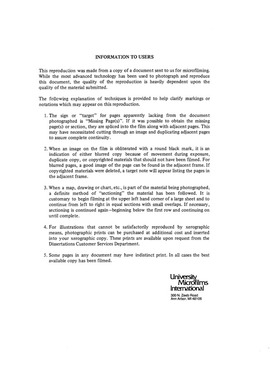| dc.contributor.author | Jenneman, Gary Edward, | en_US |
| dc.date.accessioned | 2013-08-16T12:29:22Z | |
| dc.date.available | 2013-08-16T12:29:22Z | |
| dc.date.issued | 1985 | en_US |
| dc.identifier.uri | https://hdl.handle.net/11244/5344 | |
| dc.description.abstract | Results from energy dispersion spectroscopy, and electron microscopy of autoclaved and dry-heat sterilized rock revealed that changes in mineral content and clay morphology of autoclaved rock could account for faster penetration of bacteria through autoclaved versus dry-heat sterilized rock. However, changes in permeability, porosity, and pore throat size of rock sterilized by the two methods were not sufficient to account for differences in penetration times. | en_US |
| dc.description.abstract | The addition of 58.8 mM nitrate was found to inhibit biogenic sulfide production in sewage sludge (10% v/v) amended with 20 mM sulfate and either acetate, glucose, or hydrogen as energy sources. This inhibition was observed for at least six months and was accompanied by the oxidation of the redox indicator, resazurin, from its colorless reduced state to its pink oxidized state. Lesser amounts of nitrate (5.9 mM and 19.5 mM), as well as, increasing amounts of sewage sludge resulted in only transient inhibition of sulfide production. The addition of 156 mM sulfate and 58.8 mM nitrate to 10% sewage sludge or pond sediment slurries resulted in no sulfide inhibition. The prolonged inhibition of sulfide production was attributed to an increase in oxidation-reduction potential due to production of biogenic nitrous oxide. These oxidized conditions appeared to have a cytotoxic affect on sulfate-reducing populations. | en_US |
| dc.description.abstract | Penetration times, and penetration rates, for a motile Bacillus strain growing in nutrient-saturated Berea sandstone cores were determined. The rate of penetration was essentially independent of permeability above 100 mD and rapidly declined for permeabilities below 100 mD. It was found that these penetration rates could be grouped into two statistically distinct classes consisting of rates for permeabilities above 100 mD and those below 100 mD. The maximum observed penetration rate was 0.47 cm h('-1) and the slowest was 0.06 cm h('-1). The motile Enterobacter aerrogenes penetrated Berea sandstone cores 3-8 times faster than the non-motile Klebsiella pneumoniae strain when cores of comparable length of permeability were used. A penetration mechanism based entirely on motility predicted penetration times that were in agreement with the observed penetration times for motile strains. | en_US |
| dc.format.extent | viii, 124 leaves : | en_US |
| dc.subject | Biology, Microbiology. | en_US |
| dc.subject | Secondary recovery of oil. | en_US |
| dc.title | Microbial penetration through Berea sandstone and the effect of nitrate on biogenic sulfide production : | en_US |
| dc.type | Thesis | en_US |
| dc.thesis.degree | Ph.D. | en_US |
| dc.thesis.degreeDiscipline | Department of Microbiology and Plant Biology | en_US |
| dc.note | Source: Dissertation Abstracts International, Volume: 46-08, Section: B, page: 2562. | en_US |
| ou.identifier | (UMI)AAI8523093 | en_US |
| ou.group | College of Arts and Sciences::Department of Microbiology and Plant Biology | |
